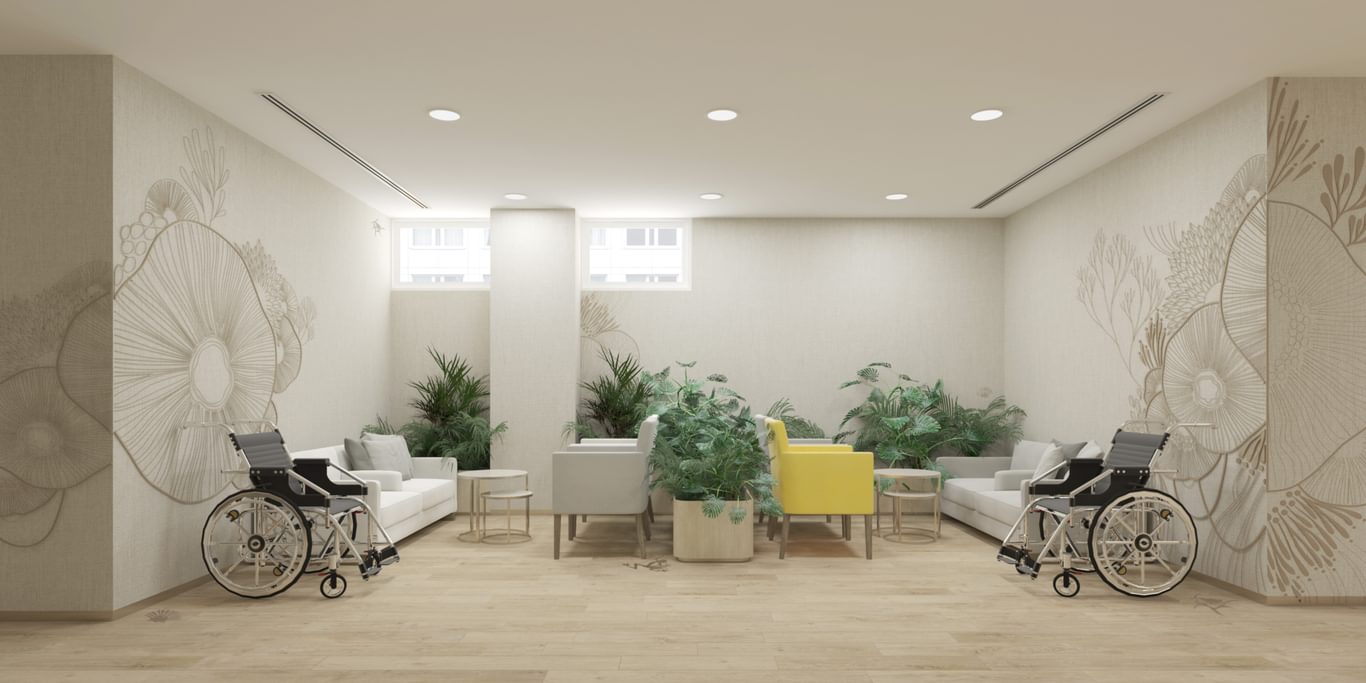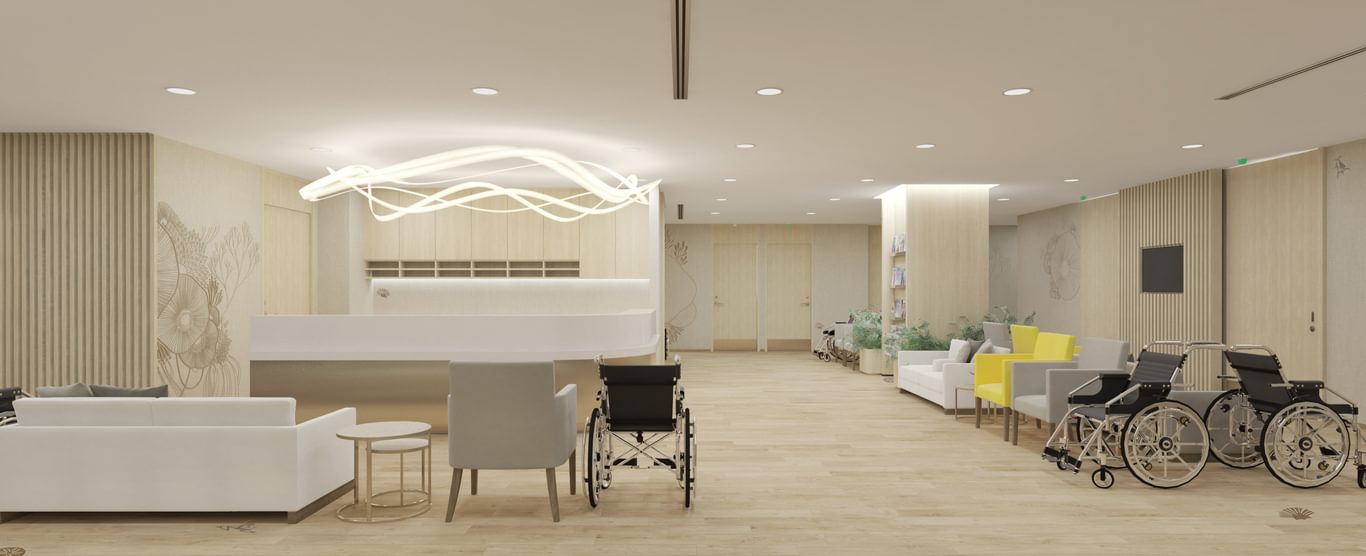
Designing hospitality healthcare destinations
We are seeing significant international growth in the relatively new sector of hospitality healthcare – hospitals, clinics and resorts which offer a luxury tourism-standard of service for paying clients. Phanukarn Intharakamjorn, from our Bangkok studio, has written an Insight paper looking at the design requirements of healthcare tourism environments, drawing on Chapman Taylor’s experience in the sector.
Our expertise
Chapman Taylor has been working with leading names in the sector to design hospitals, clinics and wellness resorts in Asia, particularly in Bangkok, to which people from all over the world travel for sophisticated and luxurious care. These places offer bespoke treatments and experiences to visitors seeking the highest quality of care, the best expertise and the latest technology within relaxing and beautiful places.
Creating a guest-focused environment requires a lot of research and expert consultation in relation to the psychological impact of design. Our design choices are evidence-based, and include biophilic features such as natural light, greenery and natural materials as well as elements which soften the spaces – neutral tones and colours, curved edges and indirect artificial lighting.
Functional efficiency is also critical to the design, whether it be in relation to the accessibility of spaces, the ability to regularly and thoroughly clean, the communications systems, energy security, accommodating sensitive and large equipment or a well-considered goods-in, waste-away strategy.
The future direction of hospitality healthcare
Prior to the COVID-19 epidemic, we had already conducted a large amount of research on infection control on behalf of our clients on our luxury hospital and wellness resort projects.
There are many elements which can be of assistance in preventing the spread of infection when used in addition to thorough cleaning and distancing. These include choosing anti-microbial materials, designing to facilitate quick and regular cleaning, touch-free technology and pathogen-killing UV lights and air filtration systems.
On a more general level, there will be a move towards creating a less clinical visual presence in hospitals and clinics. Hospitals in this sector will be more visually inviting, relaxing and luxurious, with the feel of spa hotels. Meanwhile, wellness resorts will become more common as travel destinations, providing a bespoke, immersive experience for visitors wishing to escape from the hustle and bustle of modern life and focus on their physical and mental health.
Ultimately, the distinction between healthcare and hospitality will be blurred to the extent that luxury hospitals and resorts will become as normal an option for people considering holiday destinations as guest houses and hotels.
As architects and designers with considerable expertise in this fast-growing sector, Chapman Taylor is ideally placed to design luxury healthcare environments which combine flexibility and functional effectiveness with a world-class standard of guest experience. To read about our thoughts on, and experience in, hospitality healthcare design, Chanakarn’s Insight paper can be found here.
Our expertise
Chapman Taylor has been working with leading names in the sector to design hospitals, clinics and wellness resorts in Asia, particularly in Bangkok, to which people from all over the world travel for sophisticated and luxurious care. These places offer bespoke treatments and experiences to visitors seeking the highest quality of care, the best expertise and the latest technology within relaxing and beautiful places.
Creating a guest-focused environment requires a lot of research and expert consultation in relation to the psychological impact of design. Our design choices are evidence-based, and include biophilic features such as natural light, greenery and natural materials as well as elements which soften the spaces – neutral tones and colours, curved edges and indirect artificial lighting.
Functional efficiency is also critical to the design, whether it be in relation to the accessibility of spaces, the ability to regularly and thoroughly clean, the communications systems, energy security, accommodating sensitive and large equipment or a well-considered goods-in, waste-away strategy.
The future direction of hospitality healthcare
Prior to the COVID-19 epidemic, we had already conducted a large amount of research on infection control on behalf of our clients on our luxury hospital and wellness resort projects.
There are many elements which can be of assistance in preventing the spread of infection when used in addition to thorough cleaning and distancing. These include choosing anti-microbial materials, designing to facilitate quick and regular cleaning, touch-free technology and pathogen-killing UV lights and air filtration systems.
On a more general level, there will be a move towards creating a less clinical visual presence in hospitals and clinics. Hospitals in this sector will be more visually inviting, relaxing and luxurious, with the feel of spa hotels. Meanwhile, wellness resorts will become more common as travel destinations, providing a bespoke, immersive experience for visitors wishing to escape from the hustle and bustle of modern life and focus on their physical and mental health.
Ultimately, the distinction between healthcare and hospitality will be blurred to the extent that luxury hospitals and resorts will become as normal an option for people considering holiday destinations as guest houses and hotels.
As architects and designers with considerable expertise in this fast-growing sector, Chapman Taylor is ideally placed to design luxury healthcare environments which combine flexibility and functional effectiveness with a world-class standard of guest experience. To read about our thoughts on, and experience in, hospitality healthcare design, Chanakarn’s Insight paper can be found here.





